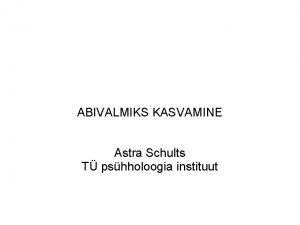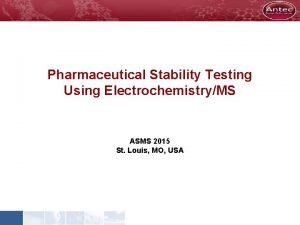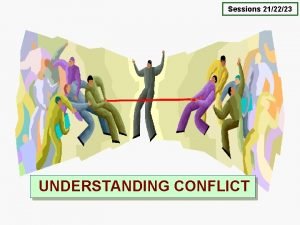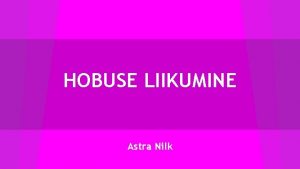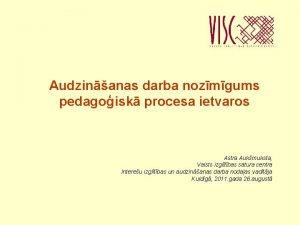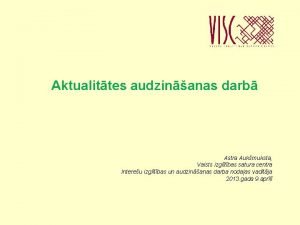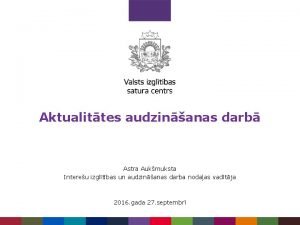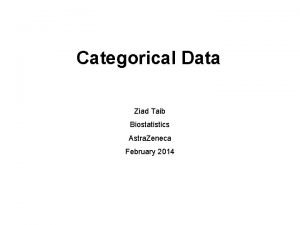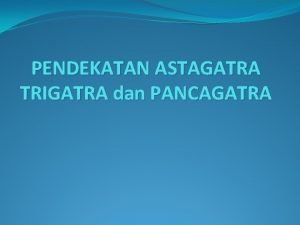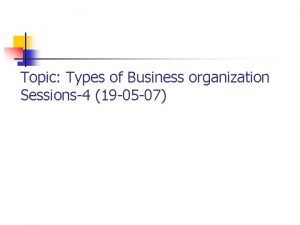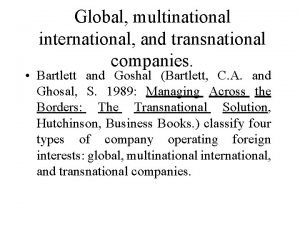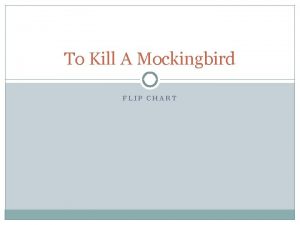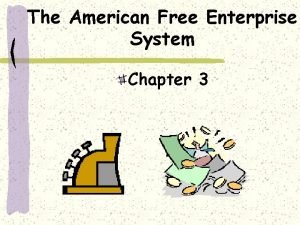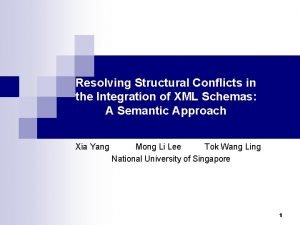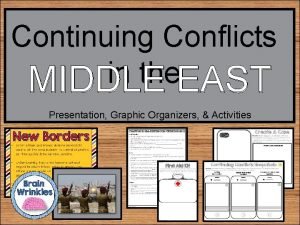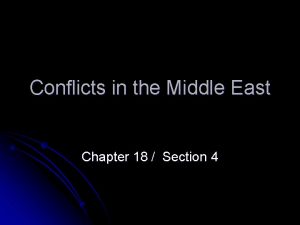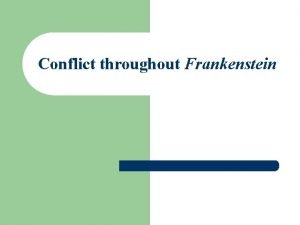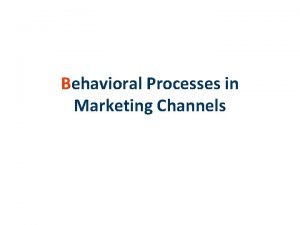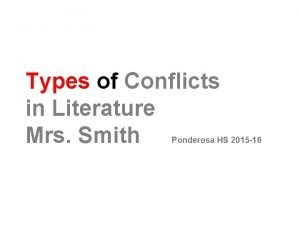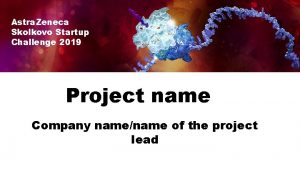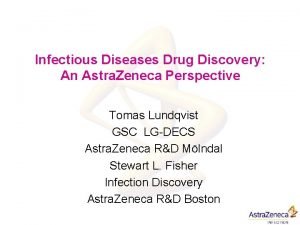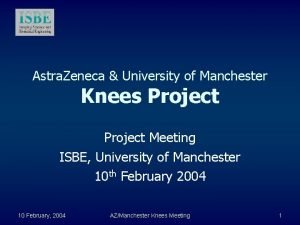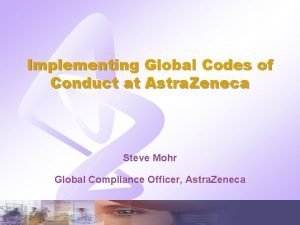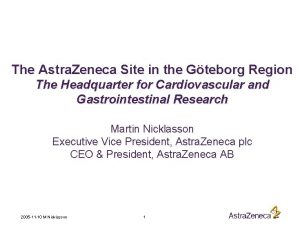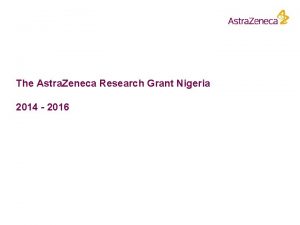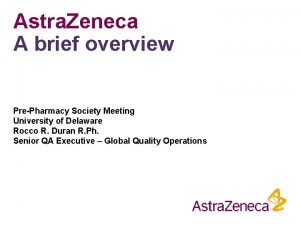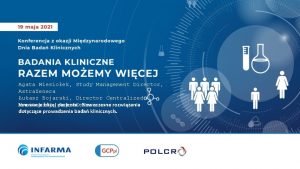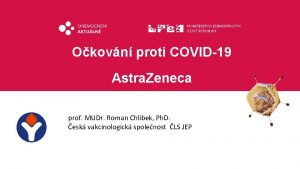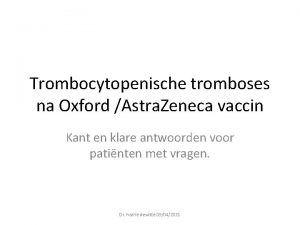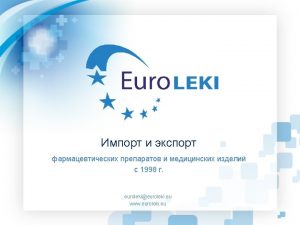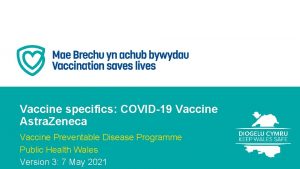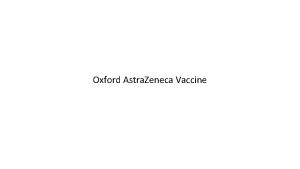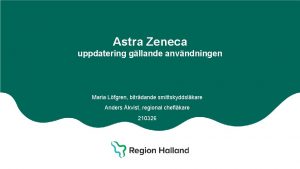Conflicts of Interest Company Name Astra Zeneca Eli



















































- Slides: 51


Conflicts of Interest: Company Name Astra. Zeneca Eli Lilly Iroko Bayer Sanofi Aventis Rafa Laboratories Pfizer Relationship honoraria, consultant honoraria, consultant Honorarium honoraria, consultant

Warfarin Use in Eligible Patients (%) Warfarin for Atrial Fibrillation Limitations Lead to Under-treatment 58% 61% 57% 55% Overall Use 44% 35% <55 55 -64 65 -74 Age (years) 75 -84 85 Go A et al. Ann Intern Med 1999; 131: 927.

The INR for VKAs is often outside therapeutic range: international study of anticoagulation management Time in target range (%) 100 INR <2 INR 2– 3 INR >3 80 60 40 20 0 US Canada France Italy Spain The predominant vitamin K antagonist (VKA) in use was warfarin in the US, Canada and Italy; acenocoumarol in Spain; and fluindione in France; INR = international normalized ratio Ansell J et al. J Thrombolysis 2007; 23: 83– 91 4

Illustration showing the sites of action of new anticoagulants in the coagulation cascade Hankey, G. J. et al. Circulation 2011; 123: 1436 -1450 Copyright © 2011 American Heart Association

Apixaban: a novel direct factor Xa inhibitor O N NH 2 N Apixaban, a structurally novel and neutral bicyclic pyrazole, was rationally designed and selected for the following qualities: § Not a prodrug O O N § Oral bioavailability: ~50% § Tmax: 3– 4 h § ~87% bound to plasma proteins N O § T 1/2: ~12 h § Multiple elimination/excretion pathways: ~27% renally excreted Apixaban Sm. PC 2012. Pinto et al. J Med Chem. 2007; 50(22): 5339 -56. EU API 234 § No active circulating metabolites T 1/2 = elimination half-life; Tmax = time to reach maximum plasma concentration Subject to local prior approval by BMS/Pfizer, as per relevant SOP and local rules, slide may be used with external audiences in local BMS/Pfizer arranged meetings

Direct factor Xa inhibition with apixaban Apixaban can neutralise factor Xa regardless of whether the target is clot bound or prothrombinase bound Apixaban factor Xa Prothrombin factor Xa Ansell. J Thromb Haemost 2007; 5(Suppl 1): 60 -64. Turpie AG. Arterioscler Thromb Vasc Biol. 2007 Jun; 27(6): 1238 -47. EU API 234 Subject to local prior approval by BMS/Pfizer, as per relevant SOP and local rules, slide may be used with external audiences in local BMS/Pfizer arranged meetings Fibrin clot


Apixaban Sm. PC recommendations in AF patients requiring switch from VKA to apixaban or apixaban to VKA Converting patients from VKA therapy to apixaban Discontinue warfarin or other VKA therapy Monitor INR at regular intervals until INR is < 2. 0 Start apixaban BD Converting patients from apixaban to VKA therapy Continue apixaban for at least 2 days after beginning VKA After 2 days, get an INR reading before next dose of apixaban Continue both apixaban and VKA until INR is ≥ 2. 0 Switching treatment from parenteral anticoagulants (and vice versa) can be done at the next scheduled dose Apixaban Sm. PC 2012. EU API 234 Subject to local prior approval by BMS/Pfizer, as per relevant SOP and local rules, slide may be used with external audiences in local BMS/Pfizer arranged meetings

How to use apixaban in patients with renal or hepatic impairment Impaired renal function Sm. PC recommendation Mild or moderate renal impairment No dose adjustment required unless the patient fulfils criteria for dose reduction to 2. 5 mg BD based on age, body weight and/or serum creatinine Severe renal impairment (creatinine clearance 15 -29 m. L/min) Dose reduction to 2. 5 mg BD Dialysis Not recommended Renal failure (creatinine clearance <15 m. L/min) Not recommended Prior to initiating apixaban, liver function testing should be performed Mild or moderate hepatic impairment (Child Pugh A or B) Use with caution. No dose adjustment required Severe hepatic impairment Not recommended Hepatic disease associated with coagulopathy and clinically relevant bleeding Contraindicated Patients with elevated liver enzymes (ALT/AST >2 x ULN) or total bilirubin ≥ 1. 5 x ULN were excluded in clinical trials. Therefore apixaban should be used with caution in this population. Apixaban Sm. PC 2012. EU API 234 Subject to local prior approval by BMS/Pfizer, as per relevant SOP and local rules, slide may be used with external audiences in local BMS/Pfizer arranged meetings

Recommendations in other populations (with AF) Patient characteristics Sm. PC recommendation Gender No dose adjustment required. Age – Elderly No dose adjustment required in the elderly unless criteria for dose reduction are met. Body weight Age – Children Pregnancy Caution when co-administered with aspirin. No dose adjustment required, unless criteria for dose reduction are met. The safety and efficacy of apixaban in children and adolescents below age 18 have not been established. No data are available. Not recommended. A risk to newborns and infants cannot be excluded. Breast-feeding A decision must be made to either discontinue breast-feeding or to discontinue/abstain from apixaban therapy. Apixaban Sm. PC 2012. EU API 234 Subject to local prior approval by BMS/Pfizer, as per relevant SOP and local rules, slide may be used with external audiences in local BMS/Pfizer arranged meetings

Apixaban Sm. PC recommendations in AF patients with concomitant treatments No dose adjustment* Caution Less potent inhibitors of CYP 3 A 4 and/or P‑gp, such as: § Diltiazem, naproxen, amiodarone, verapamil, quinidine Inducers of both CYP 3 A 4 and P‑gp Strong inducers of both CYP 3 A 4 and P-gp, such as § Rifampicin, phenytoin, carbamazepine, phenobarbital and St. John’s Wort NSAIDs including aspirin Not recommended Strong inhibitors of both CYP 3 A 4 and P‑gp, such as: § Azole-antimycotics (e. g. , ketoconazole, itraconazole, voriconazole and posaconazole) § HIV protease inhibitors (e. g. , ritonavir) Agents associated with serious bleeding, such as: § Thrombolytic agents, GPIIb/IIIa receptor antagonists, thienopyridines (e. g. , clopidogrel), dipyridamole, dextran and sulfinpyrazone *Unless other factors interfere Apixaban Sm. PC 2012. EU API 234 Subject to local prior approval by BMS/Pfizer, as per relevant SOP and local rules, slide may be used with external audiences in local BMS/Pfizer arranged meetings

Concomitant use of apixaban with antiplatelet agents increases the risk of bleeding Apixaban Sm. PC recommendations §In patients with AF and a condition that warrants mono or dual antiplatelet therapy, a careful assessment of the potential benefits against the potential risks should be made before combining this therapy with apixaban. § Apixaban should be used with caution when co-administered with NSAIDs (including ASA) because these medicinal products typically increase the bleeding risk ARISTOTLE In a clinical trial of patients with AF, concomitant use of ASA increased the major bleeding risk: § On apixaban from 1. 8% to 3. 4% per year § On warfarin from 2. 7% to 4. 6% per year § There was limited (2. 1%) use of concomitant dual antiplatelet therapy APPRAISE II In a clinical trial of high-risk post ACS patients, characterised by multiple cardiac and non-cardiac comorbidities, who received ASA or the combination of ASA and clopidogrel: A significant increase in risk of ISTH major bleeding was reported: §Apixaban: 5. 13% per year §Placebo: 2. 04% per year Apixaban Sm. PC 2012. Subject to local prior approval by BMS/Pfizer, as per relevant SOP and local rules, EU API 234 slide may be used with external audiences in local BMS/Pfizer arranged meetings

Clinical pharmacology of various new oral anticoagulants Mechanism of action Oral bioavailability Pro-drug Food effect Apixaban 1, 2 Rivaroxaban 1, 3 Dabigatran 1, 4 Direct factor Xa inhibitor Direct thrombin inhibitor ~50% 80 -100% ~6. 5% No No Yes No Renal clearance Yes (20 mg and 15 mg doses taken with food) No ~27% ~33 % * 85% Not recommended Not dialysable Dialysable Mean half-life (t 1/2) ~12 h 5 -13 h 12 -14 h Tmax 3 -4 h 2 -4 h 0. 5 -2 h Dialysis • direct renal excretion as unchanged active substance The information in this table is based on the Sm. PC for apixaban, rivaroxaban and dabigatran. Please refer to the Sm. PC for further information. 1. Ansell J. Hematology Am Soc Hematol Educ Program 2010: 221 -8. 2. Apixaban Sm. PC 2012 3. Rivaroxaban Sm. PC 2012. 4. Dabigatran Sm. PC 2012. EU API 234 Subject to local prior approval by BMS/Pfizer, as per relevant SOP and local rules, slide may be used with external audiences in local BMS/Pfizer arranged meetings

Management of bleeding complications First measures 1: 1. Treatment must be discontinued 2. The source of bleeding must be investigated 3. The initiation of appropriate treatment, e. g. surgical haemostasis or the transfusion of fresh frozen plasma, should be considered 4. Administration of activated charcoal may be useful in the management of apixaban overdose or accidental ingestion. If life-threatening bleeding cannot be controlled by the above measures, administration of recombinant factor VIIa (r. FVIIa) may be considered 1. − However, there is currently no experience with the use of r. FVIIa in individuals receiving apixaban. − Re-dosing of r. FVIIa could be considered and titrated depending on improvement of bleeding An in vitro study suggests that PCC or activated PCC reverses the anticoagulant action of apixaban. 2 1. Apixaban Sm. PC 2012 2. Escolar et al. Thromb Res 2012; 130 (Suppl 1): S 113, abstract no. C 0122 EU API 234 PCC= Prothrombin Complex Concentrate Subject to local prior approval by BMS/Pfizer, as per relevant SOP and local rules, slide may be used with external audiences in local BMS/Pfizer arranged meetings

Management of bleeding complications: Prothrombin Complex Concentrates § Prothrombin complex concentrates (PCC) contains coagulation factors II, VII, IX, X. 1 § An in vitro study suggests that PCC or activated PCC reverses the anticoagulant action of apixaban. 2 § So far, there are no studies with apixaban with PCC or activated PCC in humans. § Some animal studies suggest a beneficial effect of PCCs for the reversal of bleeding with rivaroxaban. 1 § PCC immediately and completely reversed the anticoagulant effect of rivaroxaban in healthy subjects. 1 1. Eerenberg et al. Circulation 124: 1573 -9. 2. Escolar et al. Thromb Res 2012; 130 (Suppl 1): S 113, abstract no. C 0122. EU API 234 PCC= Prothrombin Complex Concentrate Subject to local prior approval by BMS/Pfizer, as per relevant SOP and local rules, slide may be used with external audiences in local BMS/Pfizer arranged meetings

Guidance on discontinuing apixaban before surgical or invasive procedures Elective procedures Low risk of bleeding* At least 24 h prior to surgery or procedure* Moderate or high risk of bleeding** At least 48 h prior to surgery or procedure** Urgent procedures Appropriate caution should be exercised, taking into consideration an increased risk of bleeding. This risk of bleeding should be weighed against the urgency of intervention. *Interventions for which any bleeding that occurs is expected to be minimal, noncritical in its location or easily controlled **Interventions for which the probability of clinically significant bleeding cannot be excluded or for which the risk of bleeding would be unacceptable Apixaban Sm. PC 2012. EU API 234 Subject to local prior approval by BMS/Pfizer, as per relevant SOP and local rules, slide may be used with external audiences in local BMS/Pfizer arranged meetings 17

Apixaban versus Warfarin in Patients with Atrial Fibrillation Results of the ARISTOTLE Trial Presented on behalf of the ARISTOTLE Investigators and Committees Sponsored by Bristol-Myers Squibb and Pfizer

Atrial Fibrillation with at Least One Additional Risk Factor for Stroke Inclusion risk factors §Age ≥ 75 years §Prior stroke, TIA, or SE §HF or LVEF ≤ 40% §Diabetes mellitus §Hypertension Randomize double blind, double dummy (n = 18, 201) Apixaban 5 mg oral twice daily (2. 5 mg BID in selected patients) Major exclusion criteria § Mechanical prosthetic valve § Severe renal insufficiency § Need for aspirin plus thienopyridine Warfarin (target INR 2 -3) Warfarin/warfarin placebo adjusted by INR/sham INR based on encrypted point-of-care testing device Primary outcome: stroke or systemic embolism Hierarchical testing: non-inferiority for primary outcome, superiority for primary outcome, major bleeding, death

Enrollment 18, 201 patients, 1034 sites, 39 countries Norway: 90 Canada: 1057 United States: 3433 Mexico: 609 Colombia: 111 Peru: 213 Poland: 314 Sweden: 217 Denmark: 339 U. K. : 434 Netherlands: 309 Belgium: 194 Germany: 854 France: 35 Spain: 230 Czech Rep: 165 Austria: 34 Italy: 178 Brazil: 700 Israel: 344 Finland: 26 Hungary: 455 Romania: 274 Russia: 1800 Ukraine: 956 Turkey: 6 China: 843 India: 601 Malaysia: 126 South Korea: 310 Taiwan: 57 Hong Kong: 76 Philippines: 205 Singapore: 40 Chile: 258 South Africa: 89 Argentina: 1561 Japan: 336 Australia: 322

Objectives Primary objective • To determine whether apixaban is non-inferior to warfarin at reducing stroke (ischemic or hemorrhagic) or systemic embolism in patients with atrial fibrillation and at least one additional risk factor for stroke. Primary safety outcome • Major bleeding according to the International Society of Thrombosis and Hemostasis (ISTH) definition.

Objectives and Statistics To control the overall type I error, a pre-specified hierarchical sequential testing was performed. 1. The primary outcome (stroke or systemic embolism) for noninferiority (upper limit of 95% CI < 1. 38 and upper limit of 99% CI < 1. 44) 2. If met, then the primary outcome was tested for superiority 3. If met, then major bleeding was tested for superiority 4. If met, then all-cause mortality was tested for superiority

Apixaban and Warfarin Dosing • Apixaban (or matching placebo) was dosed at 5 mg twice daily, or 2. 5 mg twice daily for a subset of patients with 2 or more of the following criteria: age ≥ 80 years, body weight ≤ 60 kg, serum creatinine ≥ 1. 5 mg/d. L (133 µmol/L). • Warfarin (or matching placebo) was dosed guided by blinded encrypted INR point-of-care device, with target INR of 2. 0– 3. 0.

Baseline Characteristics Characteristic Apixaban (n=9120) Warfarin (n=9081) Age, years, median (25 th, 75 th %ile) 70 (63, 76) Women, % 35 35 Region, % North America Latin America Europe Asia/Pacific 25 19 40 16 Warfarin naïve, % 43 43 2. 1 (+/- 1. 1) 34 36 30 CHADS score, mean (+/- SD) 1, % 2, % ≥ 3, %

Baseline Characteristics Apixaban (n=9120) Warfarin (n=9081) Qualifying risk factors, % Age ≥ 75 yrs Prior stroke, TIA, or SE Heart failure or reduced LV EF Diabetes Hypertension 31 19 35 25 87 31 20 36 25 88 Renal function (Cl. Cr ml/min), % Normal (>80) Mild impairment (>50 – 80) Moderate impairment (>30 – 50) Severe impairment (≤ 30) 41 42 15 1. 5 Characteristic

Trial Metrics • Patients enrolled from December 2006 to April 2010 • Median duration of follow-up 1. 8 years • Drug discontinuation in 25. 3% of apixaban and 27. 5% of warfarin patients (p=0. 001) • Vital status at the end of the trial was missing in 380 (2. 1%) patients – Withdrawal of consent in 199 patients – Loss to follow-up in 69 patients • Median (and mean) times in therapeutic INR range among warfarin- treated patients were 66. 0 (and 62. 2)%. *Rosendaal FR et al. Throb Haemost 1993; 69: 236– 39.

Primary Outcome Stroke (ischemic or hemorrhagic) or systemic embolism P (non-inferiority)<0. 001 21% RRR Apixaban 212 patients, 1. 27% per year Warfarin 265 patients, 1. 60% per year HR 0. 79 (95% CI, 0. 66– 0. 95); P (superiority)=0. 011 No. at Risk Apixaban Warfarin 9120 9081 8726 8620 8440 8301 6051 5972 3464 3405 1754 1768

Efficacy Outcomes Apixaban (N=9120) Event Rate (%/yr) Warfarin (N=9081) Event Rate (%/yr) HR (95% CI) P Value Stroke or systemic embolism* 1. 27 1. 60 0. 79 (0. 66, 0. 95) 0. 011 Stroke 1. 19 1. 51 0. 79 (0. 65, 0. 95) 0. 012 Ischemic or uncertain 0. 97 1. 05 0. 92 (0. 74, 1. 13) 0. 42 Hemorrhagic 0. 24 0. 47 0. 51 (0. 35, 0. 75) <0. 001 Systemic embolism (SE) 0. 09 0. 10 0. 87 (0. 44, 1. 75) 0. 70 All-cause death* 3. 52 3. 94 0. 89 (0. 80, 0. 998) 0. 047 Stroke, SE, or all-cause death 4. 49 5. 04 0. 89 (0. 81, 0. 98) 0. 019 Myocardial infarction 0. 53 0. 61 0. 88 (0. 66, 1. 17) 0. 37 Outcome * Part of sequential testing sequence preserving the overall type I error

ARISTOTLE: Apixaban was superior to warfarin in reducing all-cause mortality All-cause mortality* Event rate (% / year) 11% RRR 3. 94% 669/9081 HR: 0. 89 95% CI: 0. 80 -0. 998; p=0. 047 3. 52% 603/9120 Warfarin Apixaban Figure created from data in Granger et al. N Engl J Med 2011; 365: 981 -92. EU API 234 Subject to local prior approval by BMS/Pfizer, as per relevant SOP and local rules, slide may be used with external audiences in local BMS/Pfizer arranged meetings *Key secondary efficacy endpoint

Major Bleeding ISTH definition 31% RRR Apixaban 327 patients, 2. 13% per year Warfarin 462 patients, 3. 09% per year HR 0. 69 (95% CI, 0. 60– 0. 80); P<0. 001 No. at Risk Apixaban Warfarin 9088 9052 8103 7910 7564 7335 5365 5196 3048 2956 1515 1491

Bleeding Outcomes Outcome Primary safety outcome: ISTH major bleeding* Apixaban Warfarin (N=9088) (N=9052) Event Rate (%/yr) HR (95% CI) P Value 2. 13 3. 09 0. 69 (0. 60, 0. 80) <0. 001 Intracranial 0. 33 0. 80 0. 42 (0. 30, 0. 58) <0. 001 Gastrointestinal 0. 76 0. 89 (0. 70, 1. 15) 0. 37 Major or clinically relevant non-major bleeding 4. 07 6. 01 0. 68 (0. 61, 0. 75) <0. 001 GUSTO severe bleeding 0. 52 1. 13 0. 46 (0. 35, 0. 60) <0. 001 TIMI major bleeding 0. 96 1. 69 0. 57 (0. 46, 0. 70) <0. 001 Any bleeding 18. 1 25. 8 0. 71 (0. 68, 0. 75) <0. 001 * Part of sequential testing sequence preserving the overall type I error

Subgroups for Stroke and Systemic Embolism (1 of 2)

Subgroups for Stroke and Systemic Embolism (2 of 2)

Subgroups for Major Bleeding (1 of 2)

Subgroups for Major Bleeding (2 of 2)

Adverse Events and Liver Function Tests Apixaban (N=9088) Warfarin (N=9052) Total patients with an adverse event 7406 (81. 5) 7521 (83. 1) Total patients with a serious adverse event 3182 (35. 0) 3302 (36. 5) Serious adverse events reported in ≥ 1% of patients in either treatment group Atrial fibrillation 301 (3. 3) 287 (3. 2) Pneumonia 202 (2. 2) 231 (2. 6) Discontinuations due to an adverse event 688 (7. 6) 758 (8. 4) 30/ 8788 (0. 3) 31/ 8756 (0. 4) > 3 X ULN 100/ 8790 (1. 1) 89/ 8759 (1. 0) > 5 X ULN 45/ 8790 (0. 5) 47/ 8759 (0. 5) > 10 X ULN 16/ 8790 (0. 2) 20/ 8759 (0. 2) > 20 X ULN 8/ 8790 (<0. 1) 12/ 8759 (0. 1) N (%) ALT or AST > 3 X ULN and total bilirubin > 2 X ULN ALT elevation

Benefits of apixaban over warfarin in preventing stroke, reducing bleeding and improving survival appear consistent regardless of centre quality of INR control Apixaban Warfarin HR CI 95% No. of events (%/yr) Stroke / Systemic embolism Q 1: TTR < 58. 0% 70 (1. 75) 88 (2. 28) 0. 77 0. 56 - 1. 06 Q 2: TTR 58. 0% - 65. 7% 54 (1. 30) 68 (1. 61) 0. 80 0. 56 - 1. 15 Q 3: TTR 65. 7% - 72. 2% 51 (1. 21) 65 (1. 55) 0. 79 0. 54 - 1. 13 Q 4: TTR > 72. 2% 36 (0. 83) 44 (1. 02) 0. 81 0. 52 - 1. 26 Interaction p = 0. 29 Major bleeding Q 1: TTR < 58. 0% 64 (1. 75) 115 (3. 34) 0. 53 0. 39 - 0. 72 Q 2: TTR 58. 0% - 65. 7% 61 (1. 60) 102 (2. 68) 0. 60 0. 43 - 0. 82 Q 3: TTR 65. 7% - 72. 2% 103 (2. 68) 109 (2. 89) 0. 93 0. 71 - 1. 21 Q 4: TTR > 72. 2% 98 (2. 49) 136 (3. 46) 0. 72 0. 55 - 0. 93 Interaction p = 0. 10 Death Q 1: TTR < 58. 0% 163 (3. 95) 191 (4. 75) 0. 83 0. 68 - 1. 03 Q 2: TTR 58. 0% - 65. 7% 158 (3. 71) 177 (4. 10) 0. 91 0. 73 - 1. 12 Q 3: TTR 65. 7% - 72. 2% 147 (3. 44) 174 (4. 07) 0. 84 0. 68 - 1. 05 Q 4: TTR > 72. 2% 133 (3. 03) 127 (2. 91) 1. 04 0. 82 - 1. 33 Interaction p = 0. 39 0. 0 0. 5 Favors apixaban 1. 0 1. 5 2. 0 Favors warfarin Wallentin L. European Society of Cardiology Congress, Paris, France, 28 August 2011. http: //www. escardio. org/congresses/esc-2011/congress-reports/Documents/28 -8 -CTU/ARISTOTLE-presenter-Wallentin-slides. pdf EU API 234 Subject to local prior approval by BMS/Pfizer, as per relevant SOP and local rules, slide may be used with external audiences in local BMS/Pfizer arranged meetings

Compared with warfarin, apixaban (over 1. 8 years) prevented • 6 Strokes 4 hemorrhagic 2 ischemic/uncertain type • 15 Major bleeds • 8 Deaths per 1000 patients treated.

New antithrombotic therapies compared to warfarin Stroke or systemic embolism Connolly S et al NEJM 2009; Patel M et al NEJM 2011; Granger C et al NEJM 2011

New antithrombotic therapies compared to warfarin All-cause mortality Connolly S et al NEJM 2009; Patel M et al NEJM 2011; Granger C et al NEJM 2011

New antithrombotic therapies compared to warfarin Major bleeding Connolly S et al NEJM 2009; Patel M et al NEJM 2011; Granger C et al NEJM 2011

New antithrombotic therapies compared to warfarin Major + clinically relevant bleeding Connolly S et al NEJM 2009; Patel M et al NEJM 2011; Granger C et al NEJM 2011

New antithrombotic therapies compared to warfarin Intracranial hemorrhage Connolly S et al NEJM 2009; Patel M et al NEJM 2011; Granger C et al NEJM 2011

New antithrombotic therapies compared to warfarin Myocardial infarction Connolly S et al NEJM 2009; Patel M et al NEJM 2011; Granger C et al NEJM 2011

New anticoagulants compared to warfarin in AF Effect on outcome event D 150 D 110 Riva Apix Noninferiority stroke √ √ Reduction hemorrhagic stroke √ √ Reduction ischemic stroke √ Reduction mortality (√) Reduction major bleeding Increase gastrointestinal bleeding Increase myocardial infarction √ √ √ (√) Connolly S et al NEJM 2009; Patel M et al NEJM 2011; Granger C et al NEJM 2011

Apixaban is the only oral anticoagulant to demonstrate superiority vs. warfarin in all of the following 3 outcomes Superior stroke/systemic embolism prevention 21% RRR Superior profile in reducing major bleeding 31% RRR Superior reduction in all-cause mortality 11% RRR p<0. 001 p=0. 047 Event rate (% / year) p=0. 01 3. 94% 669/9081 3. 09% 603/9120 462/9052 2. 13% 1. 60% 265/9081 327/9088 1. 27% 212/9120 Primary efficacy endpoint Primary safety endpoint ► Median duration of follow-up 1. 8 years Figure created from data in Granger et al. N Engl J Med 2011; 365: 981 -92. EU API 234 3. 52% Subject to local prior approval by BMS/Pfizer, as per relevant SOP and local rules, slide may be used with external audiences in local BMS/Pfizer arranged meetings Key secondary endpoint Apixaban Warfarin (target INR 2. 0 -3. 0)

Risk factor-based point-based scoring system - CHA 2 DS 2 -VASc *Prior myocardial infarction, peripheral artery disease, aortic plaque. Actual rates of stroke in contemporary cohorts may vary from these estimates. www. escardio. org/guidelines European Heart Journal (2010) 31, 2369 -2429

Anti thrombotic therapy in non valvular AF www. escardio. org/guidelines European Heart Journal 2012 - doi: 10. 1093/eurheartj/ehs 215

Anti thrombotic therapy in non valvular AF www. escardio. org/guidelines European Heart Journal 2012 - doi: 10. 1093/eurheartj/ehs 215

Anti thrombotic therapy in non valvular AF www. escardio. org/guidelines European Heart Journal 2012 - doi: 10. 1093/eurheartj/ehs 215

THANK YOU!
 Per aspera ad astra zeneca
Per aspera ad astra zeneca Astra schults
Astra schults Eli eli lama azavtani analiza pjesme
Eli eli lama azavtani analiza pjesme Rastra zeneca
Rastra zeneca What is conflict of interest
What is conflict of interest Name two ways to prevent conflicts from building
Name two ways to prevent conflicts from building Name of presentation company name
Name of presentation company name Name of presentation company name
Name of presentation company name Nominal v. real interest rates
Nominal v. real interest rates Nominal rate of interest
Nominal rate of interest Simple interest and compound interest
Simple interest and compound interest Name a point that is collinear with the given points
Name a point that is collinear with the given points Per aspera ad astra interpretacja
Per aspera ad astra interpretacja Mathew bevan
Mathew bevan Contohkasus manajemen risiko pt astra
Contohkasus manajemen risiko pt astra Liceul astra pitesti
Liceul astra pitesti Sammu pikkus
Sammu pikkus Astra aukšmuksta
Astra aukšmuksta Astra aukšmuksta
Astra aukšmuksta Astra aukšmuksta
Astra aukšmuksta Astra zenec
Astra zenec Ad astra jurgis savickis
Ad astra jurgis savickis Astra
Astra Astra international honda sales operation
Astra international honda sales operation Trigatra dan pancagatra
Trigatra dan pancagatra Limited company vs partnership
Limited company vs partnership Company act 1994
Company act 1994 Holding company definition
Holding company definition Multinational vs transnational
Multinational vs transnational What type of company was the virginia company?
What type of company was the virginia company? External conflict in literature definition
External conflict in literature definition To kill a mockingbird
To kill a mockingbird To kill a mockingbird climax
To kill a mockingbird climax Lesson 1 american free enterprise capitalism
Lesson 1 american free enterprise capitalism Structural conflict
Structural conflict Internal conflict in fahrenheit 451
Internal conflict in fahrenheit 451 Conflicts in the middle east comprehension check
Conflicts in the middle east comprehension check Chapter 18 section 4 conflicts in the middle east
Chapter 18 section 4 conflicts in the middle east Conflicts in frankenstein
Conflicts in frankenstein Outsiders chapter 3
Outsiders chapter 3 Chapter 9 resolving conflicts and preventing violence
Chapter 9 resolving conflicts and preventing violence Chapter 9 lesson 2 resolving conflicts
Chapter 9 lesson 2 resolving conflicts Motivational conflict marketing
Motivational conflict marketing A horizontal conflict
A horizontal conflict Chapter 12 lesson 2
Chapter 12 lesson 2 Behavioral processes in marketing channels
Behavioral processes in marketing channels Conflict animal farm
Conflict animal farm Conflicts in the crucible
Conflicts in the crucible External conflict literary term
External conflict literary term Chapter 9 resolving conflicts and preventing violence
Chapter 9 resolving conflicts and preventing violence Conflicts in wuthering heights
Conflicts in wuthering heights Types of conflicts in books
Types of conflicts in books

